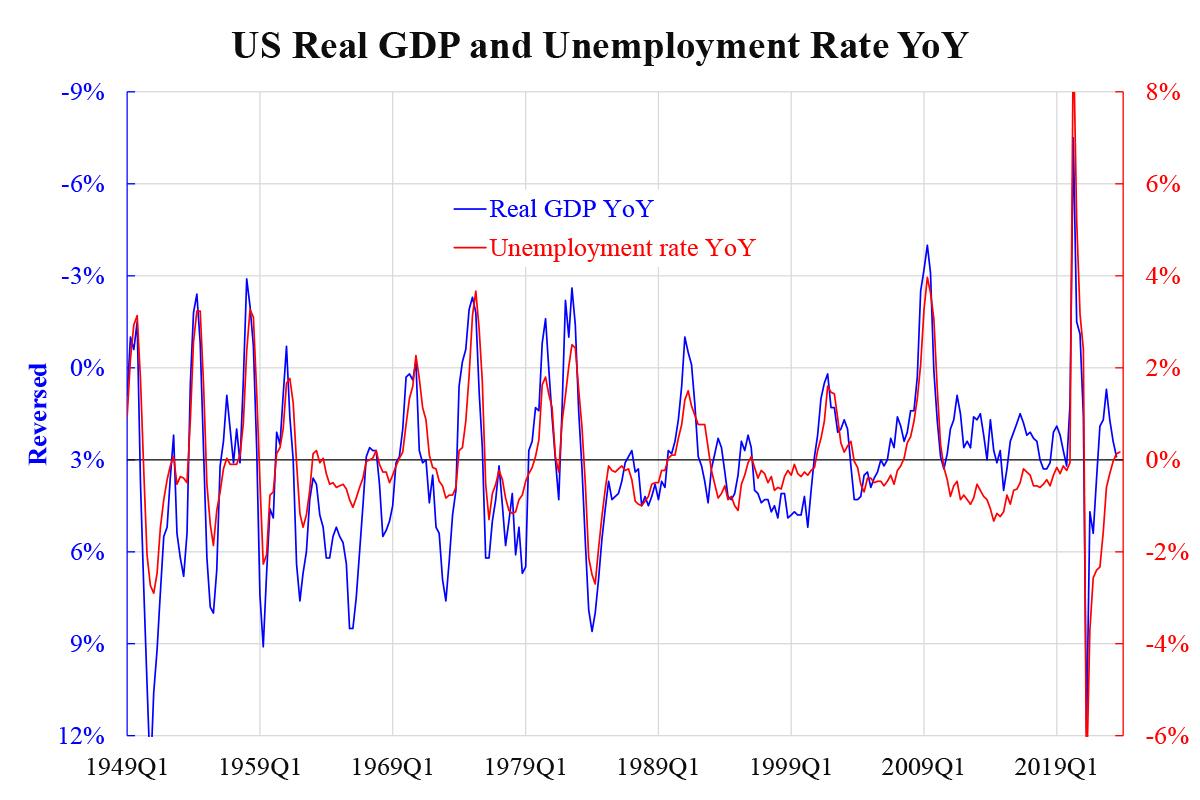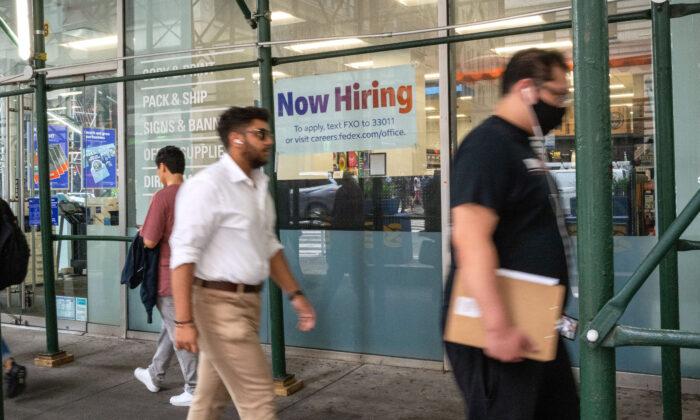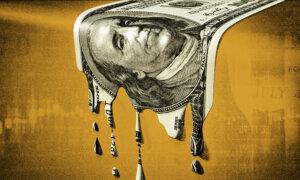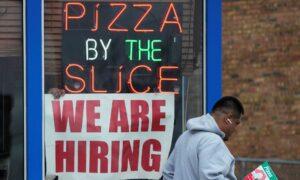Most of the time, it is not easy to tell how good or bad an economy is. Take the United States as an example, while the non-farm payroll year-over-year (YoY) growth rate has been on a downtrend (from above 10 percent in April 2021 to below 2 percent recently), the unemployment rate has remained flat and low in the recent seven quarters, yet real GDP YoY growth has been fluctuating although it has rebounded recently.
Whenever an economy is not experiencing any bubbling or bursting, the real economic variables tend to move within certain ranges and can perform differently.
One standard way to check the consistency among real variables is by using Okun’s law, which prescribes an empirical negative correlation between real GDP and the unemployment rate.
To say it is standard is because there have been so many claiming that GDP does not represent the economy well. However, such a claim can be rejected if it is highly correlated with some down-to-earth variable like unemployment. Okun’s law is doing that job exactly. Although it is labeled as merely an empirical relationship, there is certainly a theory behind a general equilibrium.
At least from the production function, we can link output (real GDP) with labor input, where the latter defines the unemployment rate with the labor force. As the two are positively related using a labor share, then real GDP and unemployment are, by construction, negatively correlated.
It just requires some theoretical derivation work to link up the two variables of Okun’s law. In other words, Okun’s law has a theoretical basis, albeit indirectly. It also requires some technical adjustments as GDP growth is a flow, so we also need to change the form for the unemployment rate.

The accompanying chart does this by plotting the U.S. real GDP YoY growth rate with the unemployment rate YoY change (just a simple difference). An obvious negative correlation is observed with the left axis reversed. It is also easy to see that whenever there are large swings (up and down), the two series match better, where the correlation is otherwise low. This echoes our beginning discussion that the variables’ performances do not add up whenever the economy is not overheating or undercooling. But those volatile periods are not the majority.
The picture is indeed quite different between the left half and right half of the chart. That says, a better match is seen in the stagflation era while less matched after 1984, the so-called Great Moderation era.
It is well documented that high inflation would introduce high volatility to the overall economy. As inflation was contained for the following 3.5 decades, economic volatility was generally low.
However, it shows recent inflation is highly similar to the 1970s. One might wonder if the picture will revert to that period. At the moment, we haven’t observed this, and there is no guarantee as inflation might not return to low single digits easily. After all, the chart shows two series now reconverge with each other again, and a commoving mode has been dominating over the past three years.
KC Law, Ka Chung







